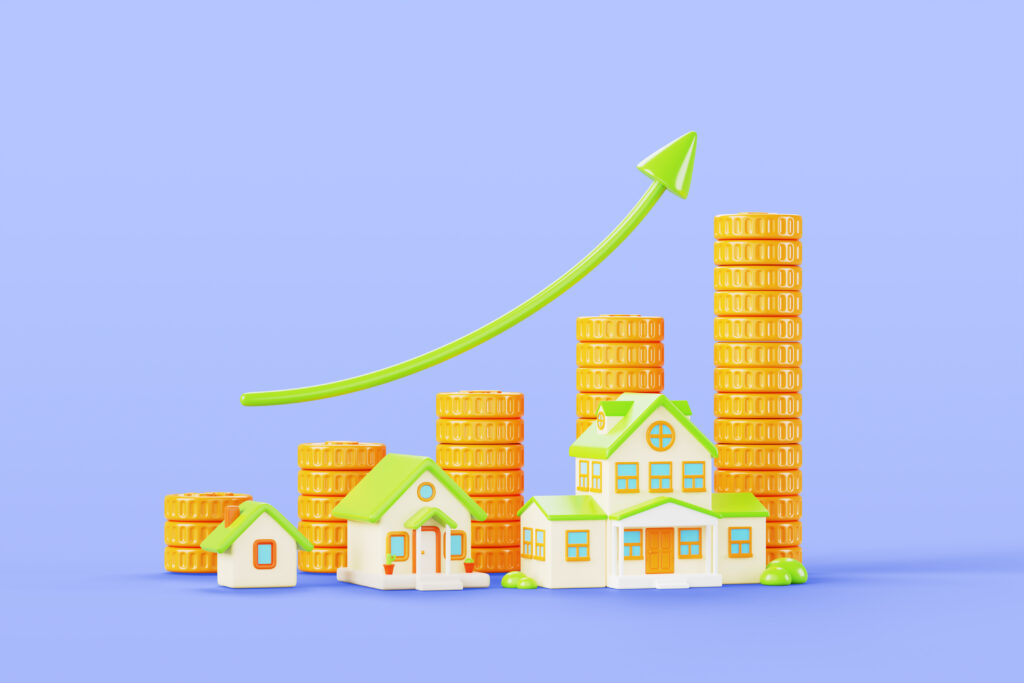
The term “real estate bubble” has gained attention recently due to worries about the possibility of a market crash and the sustainability of skyrocketing property prices. This blog will discuss what defines a real estate bubble, the circumstances that lead to its development, and negotiating tactics for both buyers and sellers in this unpredictable market.
Understanding the Real Estate Bubble: A real estate bubble occurs when property prices rise rapidly, driven by speculative demand rather than fundamental factors such as income growth, population growth, or housing demand. This unsustainable price growth eventually reaches a tipping point, leading to a sharp decline in property values as speculative demand evaporates and market fundamentals come into play.
A real estate bubble can arise due to a number of reasons, such as cheap interest rates, loose lending guidelines, speculation, investor panic, and market psychology. When all of these factors come together, there may be an excess of demand over supply for real estate, pushing prices to unaffordable heights

A notable example of Real Estate Bubble
The housing bubble that occurred in the US ahead of the 2007–2008 financial crisis is an iconic example of a real estate bubble. A number of factors led to the sharp rise in house prices during this time, especially in states like Florida, California, Nevada, and Arizona.
Easy access to mortgage credit: Flexible lending rules and cheap beginning interest rates were being offered by lenders together with sometimes minimal or no down payment requirements. As a result, more individuals could now afford to purchase homes, which increased demand for housing.
Speculative activity: A lot of investors got into the real estate market with the goal of making quick money by flipping houses. The prices were further raised by this speculative behaviour.
Housing market psychology: A “buy now or be priced out forever” mentality was prevalent among buyers due to the general belief that home prices would climb endlessly.
Financial innovations: Banks were able to bundle and sell mortgage loans, spreading risk throughout the financial system, thanks to complex financial products including mortgage-backed securities (MBS) and collateralized debt obligations (CDOs). But these tools also helped to inflate the bubble by hiding the real risk associated with subprime mortgages.
These causes caused house prices to rocket to unaffordable heights, greatly exceeding both income growth and the fundamentals of the housing market. Home values fell precipitously when the bubble ultimately burst in 2007–2008, brought on by the collapse of the subprime mortgage industry and the subsequent wave of foreclosures.
The housing bubble in the United States is a warning about the risks associated with excessive speculation and unsound lending practices in real estate markets.

The Indian real estate market has experienced several instances of bubbles or speculative frenzies, leading to inflated prices followed by corrections. Here are a few examples:
- 2008 Global Financial Crisis: The 2008 global financial crisis resulted in a major bubble burst in the Indian real estate industry. Prior years had seen a sharp increase in prices, driven by investment opportunities and easy financing. Demand fell when the crisis hit, which caused prices to sharply correct.
- 2010–2013: The Indian real estate market saw another boom after the world financial crisis subsided, especially in big cities like Bangalore, Delhi, and Mumbai. Due to speculative investments, cheap financing, and the general belief that real estate is a secure investment, prices skyrocketed. However, the oversupply, high interest rates, and slowing economy caused this bubble to burst about 2013.
- The COVID-19 outbreak in India first led to a downturn in the real estate industry because of lockdown regulations and unpredictability in the economy. However, there was a spike in real estate investments as the economy gradually recovered and interest rates stayed low. A possible bubble was formed in some areas of the Indian real estate market as a result of speculative activity, easy lending, and government incentives. The problem was made worse by elements including excessive developer leverage, overvaluation of properties, and an imbalance between supply and demand. A large drop in property values could result from the implosion of this bubble, which would affect financial institutions, investors, developers, and the economy as a whole.
The Indian real estate market may have somewhat stabilized by 2024, but a few things might still lead to a possible bubble:
1. Speculative Investments: A bubble that may burst when demand is insufficient to sustain inflated prices may result from investors flooding the market with speculative investments, pushing up property values above their intrinsic value.
2. Too Much Debt: If developers take on too much debt to fund their projects, they can find it difficult to pay back their loans if the market doesn’t perform as predicted.
3. Economic Factors: Unexpected economic shocks, like adjustments to interest rates, inflation, or jobless rates, may have an effect on consumer confidence and cause the real estate market to decline.
4. Regulatory Shifts: Modifications to government legislation pertaining to foreign investment, taxation, or land acquisition may have an impact on investor confidence and the dynamics of the real estate market.
Conclusion :
Although the prospect of a real estate bubble looms large, smart buyers and sellers can successfully negotiate this unpredictable environment by being cautious, doing extensive research, and basing their decisions on the fundamentals of the market rather than speculation. Both buyers and sellers can weather the ups and downs of the real estate market and come out stronger in the long term by taking a cautious approach.


